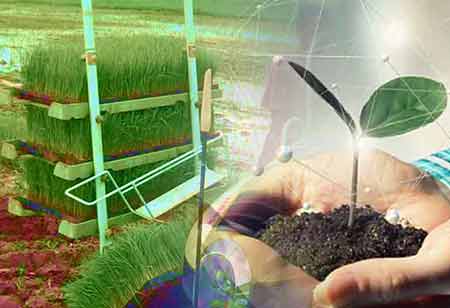Thank you for Subscribing to Agri Business Review Weekly Brief
Agriculture's Use of Solar Energy
Conversion from non-renewable to renewable energy sources has brought many opportunities.

By
Agri Business Review | Thursday, August 04, 2022
Stay ahead of the industry with exclusive feature stories on the top companies, expert insights and the latest news delivered straight to your inbox. Subscribe today.
Solar energy can be utilized in agriculture in different ways, including cost savings, higher self-sufficiency, and pollution reduction.
FREMONT, CA: Solar energy, in its infancy, was mainly used by powerhouses and businesses located far from a power grid. However, solar energy has extended into new areas and applications over time. Diverse from fossil-fueled energy sources such as coal, gas, and petroleum, solar energy is not subject to depletion.
Conversion from non-renewable to renewable energy sources has brought many opportunities. Likewise, it has increased demand for solar panel installations, lowering costs. As a result, solar energy has enormously advanced in everyday life, agriculture, and transportation. While solar energy has historically been employed to power space heating and lighting, it has grown to encompass sun drying, solar cooling and refrigeration, and cooking.
Agriculture and Solar Energy
Rural communities rely on agriculture and require access to renewable energy sources to maintain a sustainable lifestyle. Agricultural operations, like irrigation, poultry lighting, and pest control, do not need a large energy output, and solar photovoltaic cells are a well-established energy source.
As farming and agriculture consume substantial electricity for irrigation, greenhouses, plowing, heating and cooling livestock housing, and dairy activities, utility bills can quickly deplete the budget. But, while the initial cost of solar energy may be costly, farmers will have an advantage in the long run. Solar drying, water pumping, and food preservation are just a few areas the agricultural industry might benefit from.
Drying: Historically, agricultural items such as meat, vegetables, and fruits were dried in the open air, resulting in a greater incidence of perishables loss. Other than that, employing solar thermal energy after a harvest allows for a more extended storage period because it is faster and is not affected by natural elements. Furthermore, farmers can ship them in advance if markets are not already saturated. Solar dryers come in various configurations, direct, indirect, and hybrid. Direct drying is attained with a solar box dryer, indirect drying is accomplished with a solar cabinet dryer, and mixed or hybrid drying is attained with a hybrid solar/biomass cabinet dryer.
Refrigeration: Refrigeration is necessary for processing and preserving agricultural food products, which is an energy-intensive process. Solar energy is more feasible for cooling, especially in remote locations with limited or no access to a power grid. In addition, solar energy can be used successfully for space cooling or a mix of heating and cooling, prolonging farm product shelf life.
Pumps for Water: Solar energy can be utilized for small-scale farming and irrigation on a larger scale. Solar water pump systems might incorporate an inverter and energy storage to offer a constant water supply every 24 hours. Solar water pumps can also keep a consistent water supply for livestock and everyday consumption.
To Conclude, solar energy and its applications continue to evolve. However, with new and upgraded technology, solar energy appears to be the most rational, financially practical, and environmentally friendly answer.





